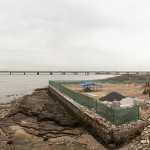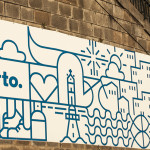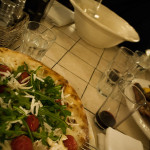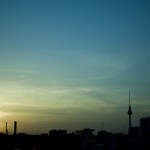Rome, like many other capitals in Europe, needs more than one visit to be understood. A city steeped in a history, almost infinite. Also, unless you prepare an intensive program of visits and acquire the Roma Pass, you’ll find yourself in more than a row and you’ll end up waiting quite shattered as well as saturated with information after so many visits. From my point of view, if you want to enjoy Rome in all its senses, do it slowing down the tempo and walking, walking a lot.
On previous trips I visited some of the main attractions, such as the Pantheon, Museum of Contemporary Art, San Pedro, Piazza di Spagna, Piazza del Popolo … and so on. Actually, it is not rare that if I can not fly direct to any destination, I’d prefer to do it via Rome or London adding a large stopover to enjoy the day. On this occasion I had two objectives: Colosseo on Sunday (thanks to first-Sunday-gratuity in all museums and archaeological sites of Italy), and the Sistine Chapel and Vatican Museum on Saturday (which is also free, but the first Saturday of the month, which was not the case).

Besides these two tourist targets, I had my personal ones. On the one hand, to steal a coffee from a friend in the neighborhood of Testaccio, which I introduced in our Thursday’s Hidden Gems and on the other hand, to down the pace of January’s intense work. And as Rome must be walked, I did not hesitate for a second to book the last weekend of January. Moreover, living in Barcelona allows you to fly very early on Saturday and return late on Sunday, as there are up to 9 daily flights linking both cities. You can then enjoy two full days in the city and pay just one night stay (without requesting days off at work!).

As I said, Italy offers all its museums and archaeological sites for free every first Sunday of the month. It sounds tempting, but it also means that Romans take to the street to explore their cities a bit better. This results in longer queues as usual in most places to visit. When reading the overview of the program we are repeatedly warned that the Colosseo only allows a maximum of 3000 people per hour. But, quite frankly, what other monumental in Rome will allow such influx of people? When I got there the cue was pretty long, surrounding half of the monument, but I admit that it was “quick” and in half an hour you get inside. In addition, no blocking was experienced because of lack of capacity. So no worries on that, and go ahead for Colosseo during free Sundays in Rome.

The Colosseum is not only to be enjoyed inside, but also because of its views. From there, you have a magnificent view of the environment of the forum. That Forum that the splendorous and powerful Rome made so important for so many years and so many people. You’ll find the impressive Arch of Constantine as you look out of Colosseo, as well as the area behind: the Palatine and the Roman Forum, whose queues don’t move and forced many visitors to lose a morning or afternoon in a single attraction because of a bad management of free Sundays in Rome.
After visiting Colosseo, it was time to eat and enjoy walks through the streets of Rome. I enjoyed again places like the Pantheon and Piazza Navona, but also stopping on my way at small shops that many Romans and tourists love. Following the advice of a passionate friend of Rome, I did not hesitate to go through Square Eustachio and the café with the same name. In this cafe you can buy a delicious coffee from Nicaragua by the weight and thus take a souvenir that will remind Roma longer, because the feelings are the best souvenir.







Comments by d_lopezalvarez